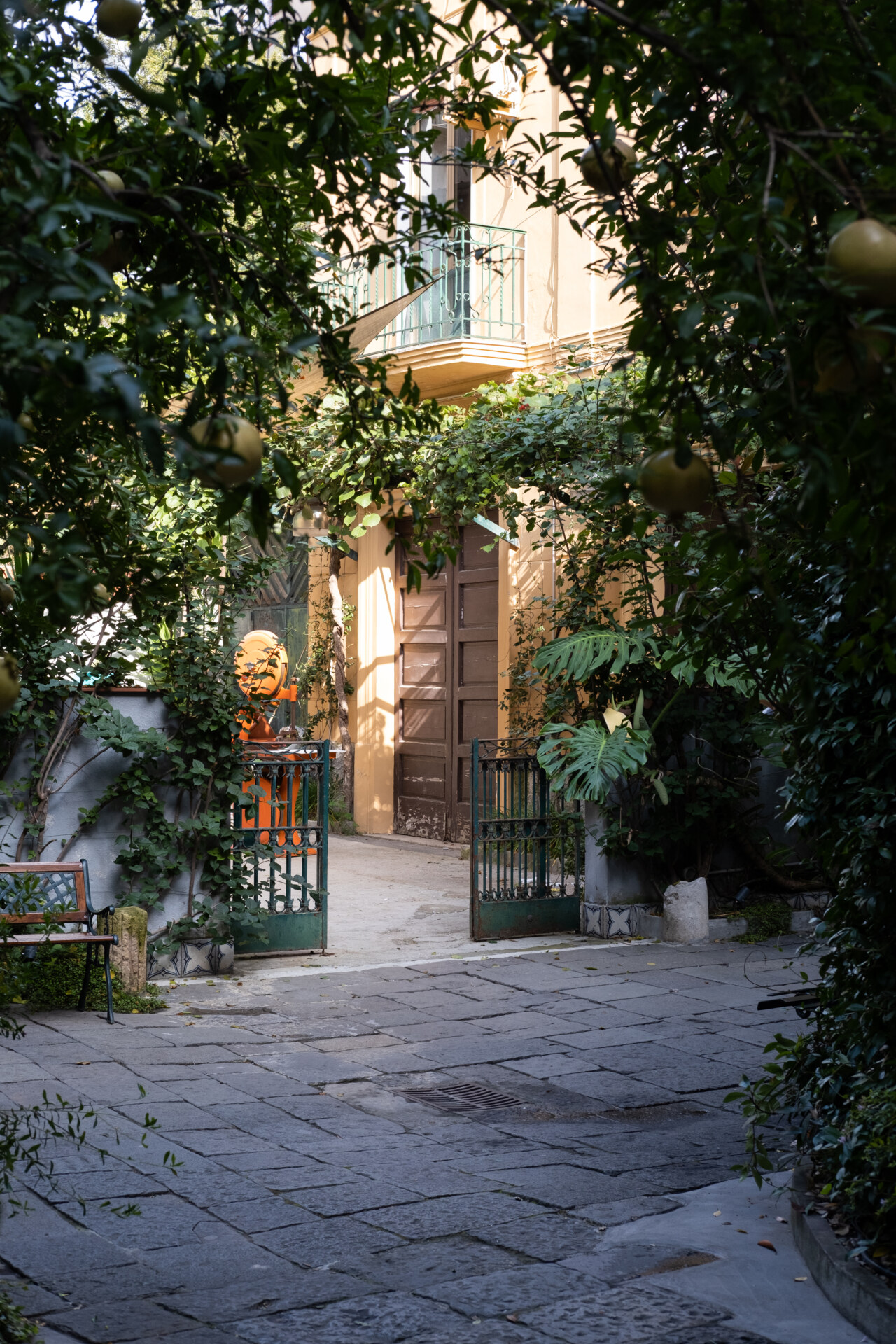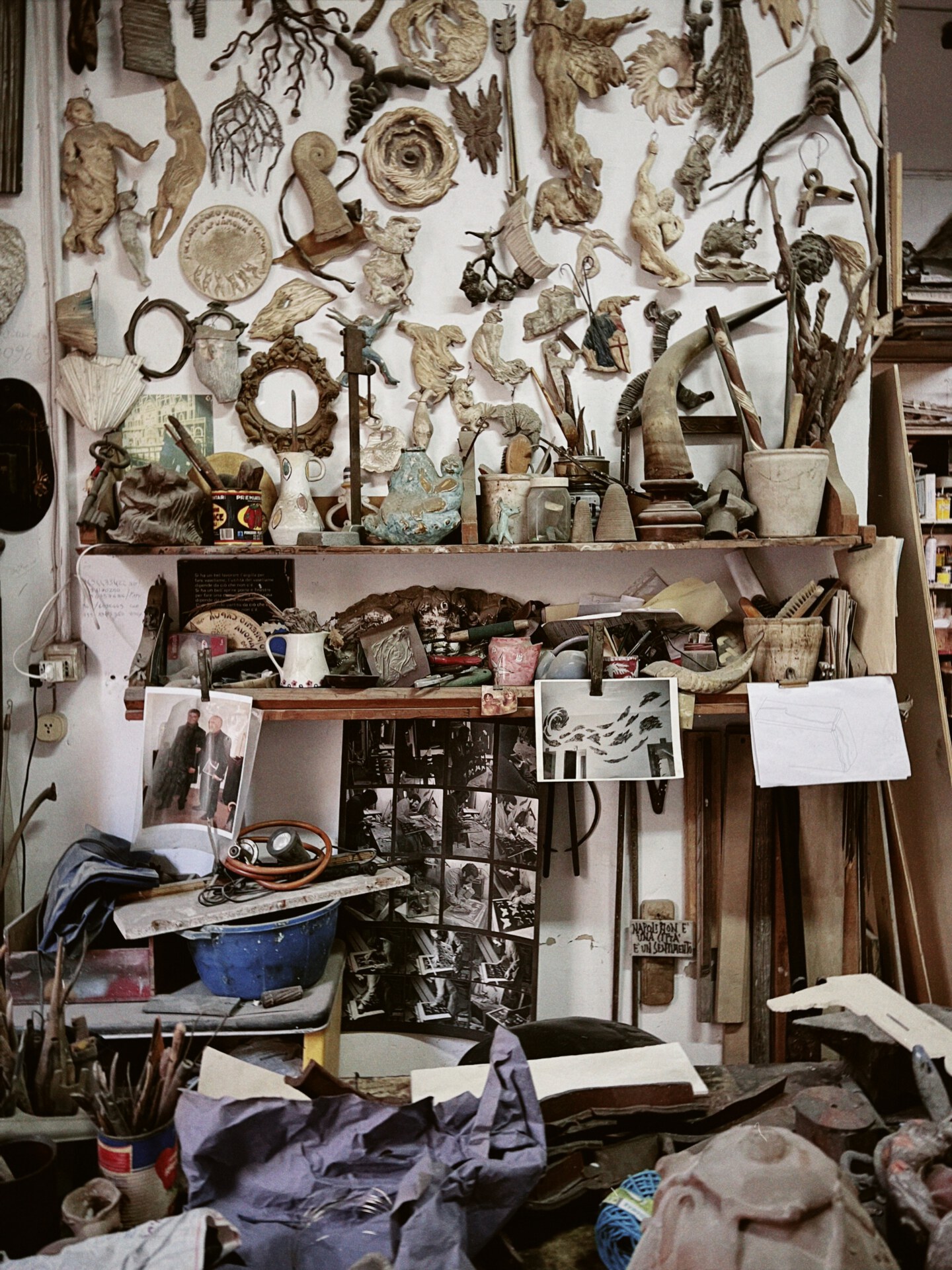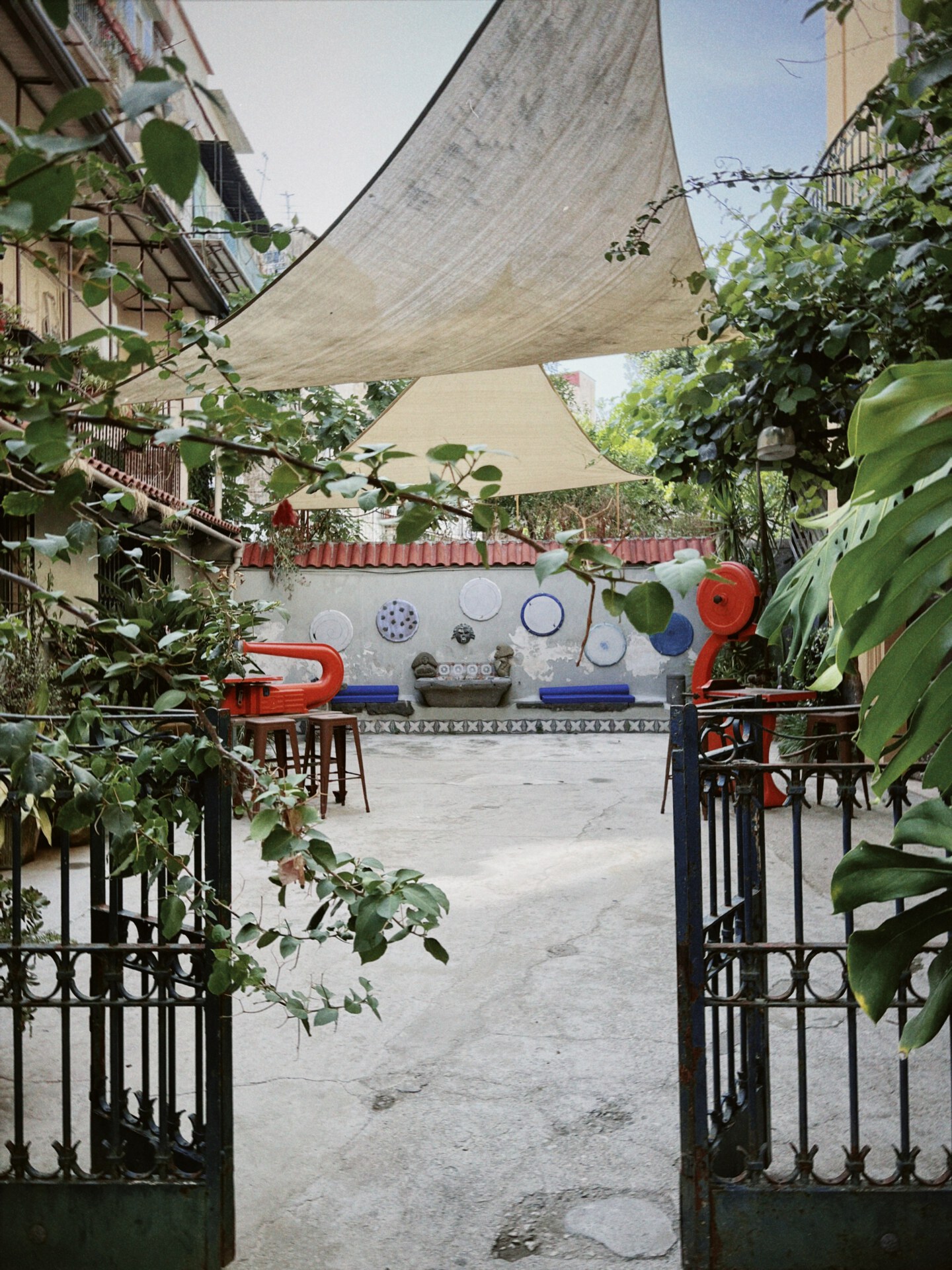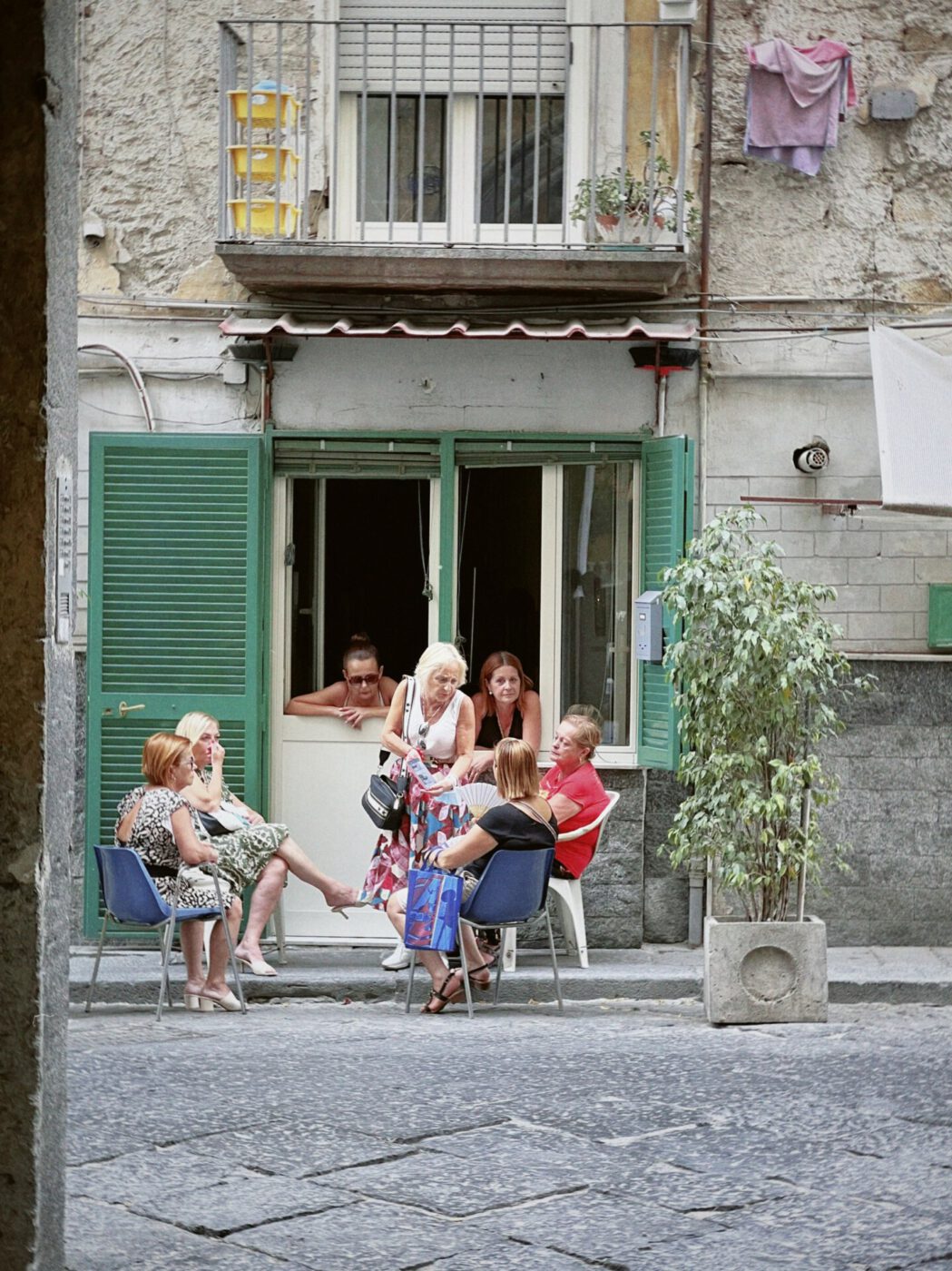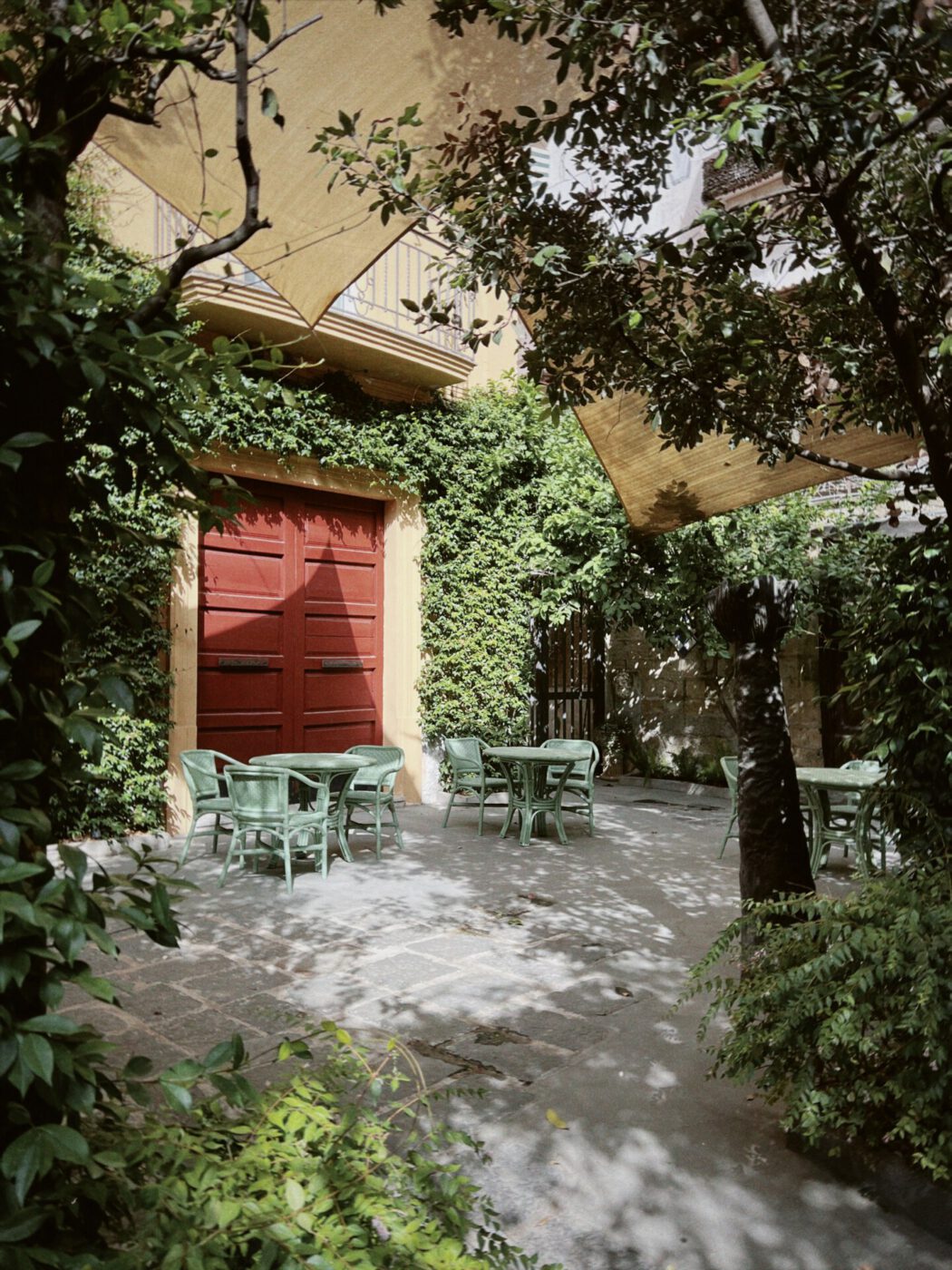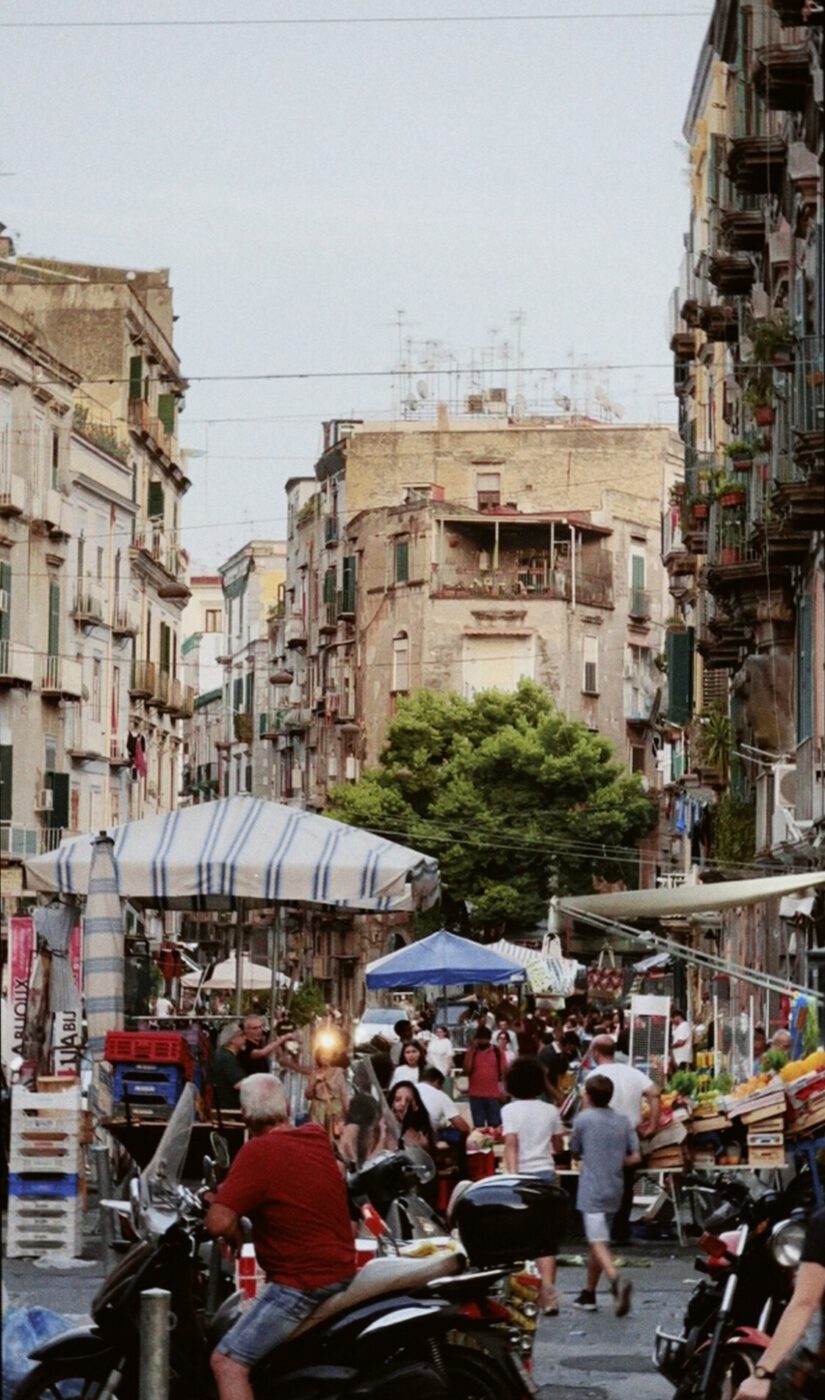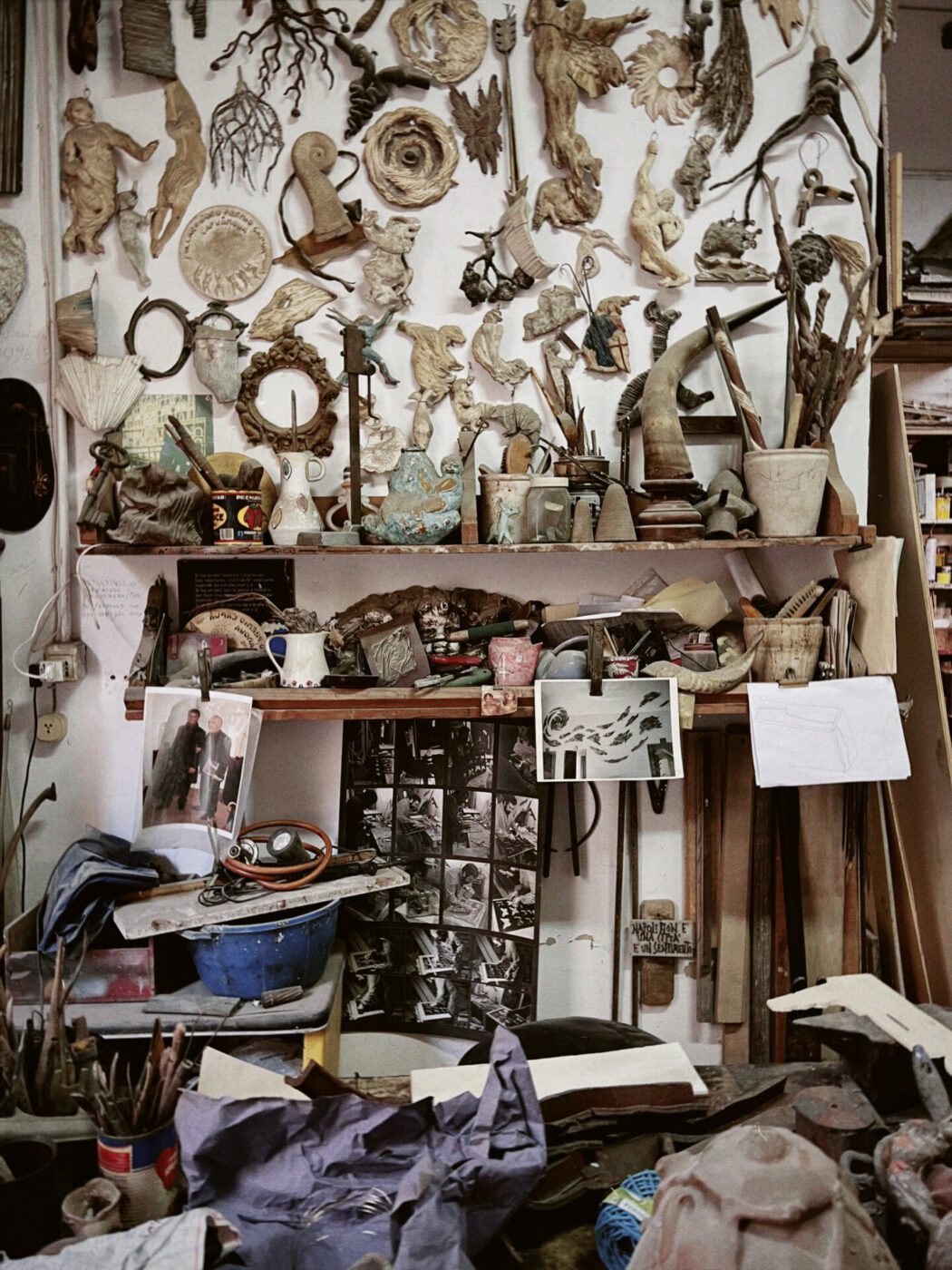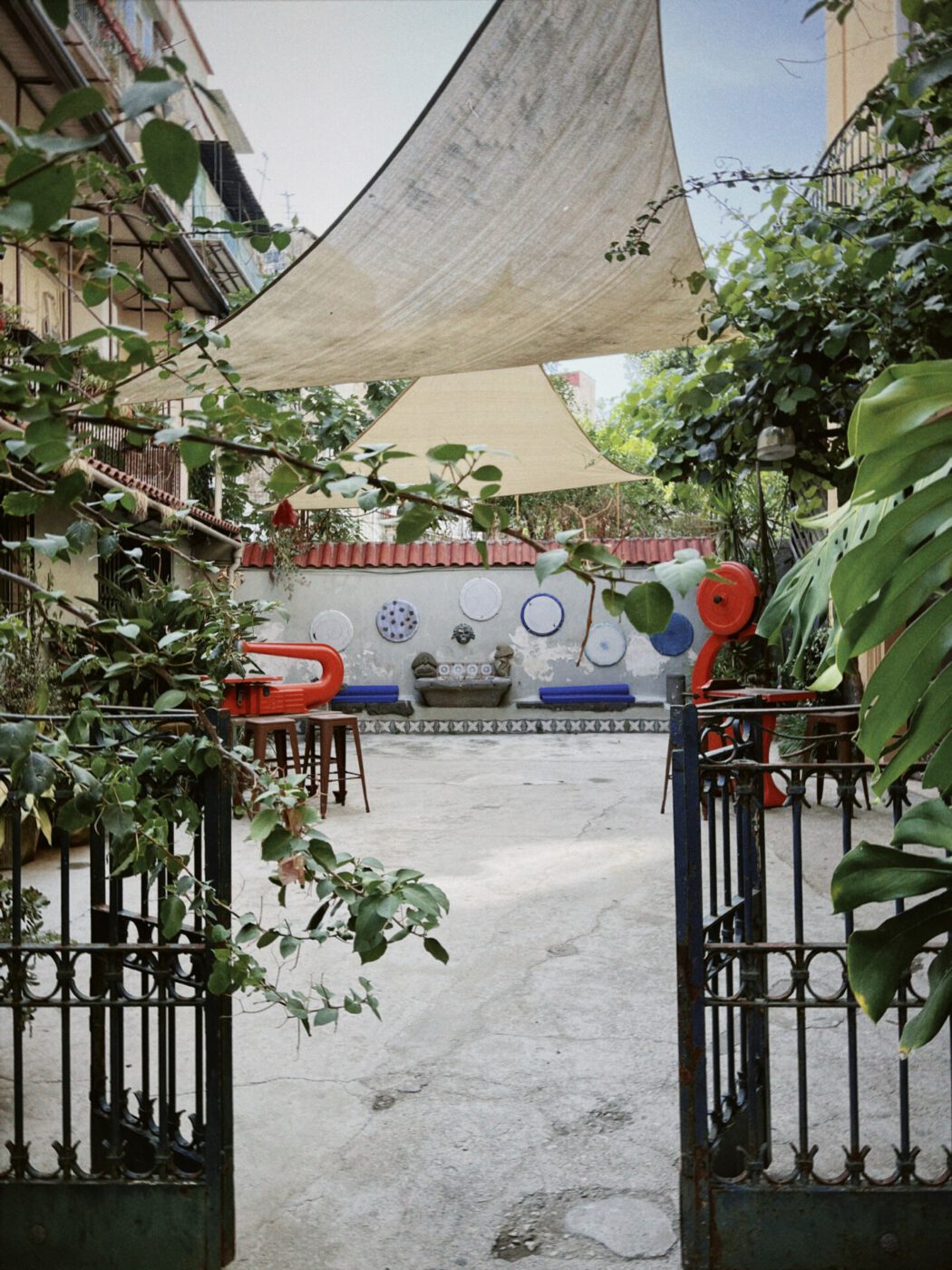While Naples has changed throughout the years–some may even say “cleaned-up”–there’s one neighborhood where the city’s spirit, its ammuina (cheerful confusion), hasn’t been washed away. In Rione Sanità, fruit stalls overflowing with seasonal produce stand next to those selling budget packs of red underwear, vendors incessantly shout “FRUTTA FRESCA!”, mopeds topped with the Neapolitan version of a human pyramid zigzag between cars, and the walls continue to crumble somehow charmingly. In Rione Sanità, grandmothers chat in gossipy whispers on doorsteps while young kids (not necessarily related to said grandmothers) play made-up games in the streets. Rione Sanità is a neighborhood that just a few years ago tourists would have been scared to step foot in, but that today is on the tip of everyone’s tongue.
Close to the National Archaeological Museum of Naples, Rione Sanità is famous for Palazzo dello Spagnolo (known for its monumental double-ramp staircase, known as the “falcon’s wing”), Palazzo San Felice (similar, but more modest) and the Borgo dei Vergini, which owes its peculiar name to a Greco-Roman past and a story of a local woman who attempted to seduce a chaste boy. As of 2022, the hypogea, including that of the Cristallini, is open to the public: the subterranean chamber dates back more than 2,300 years and was formerly used as a necropolis (part of a morbid side of the district that can also be found at Fontanelle Cemetery and the Catacombs of San Gaudioso).
Rione Sanità is strikingly Neapolitan, the spirit of the ancient city, and yet it’s going through a renaissance: recent, buzzed-about openings like the hypogea, as well as Ciro Oliva’s famed pizzeria Concettina ai Tre Santi, are bringing attention to the neighborhood, smoothing out its rougher edges. But locals, who are opening and/or helming these places, are doing so on their own terms–without watering down the neighborhood’s character or forgetting its past.
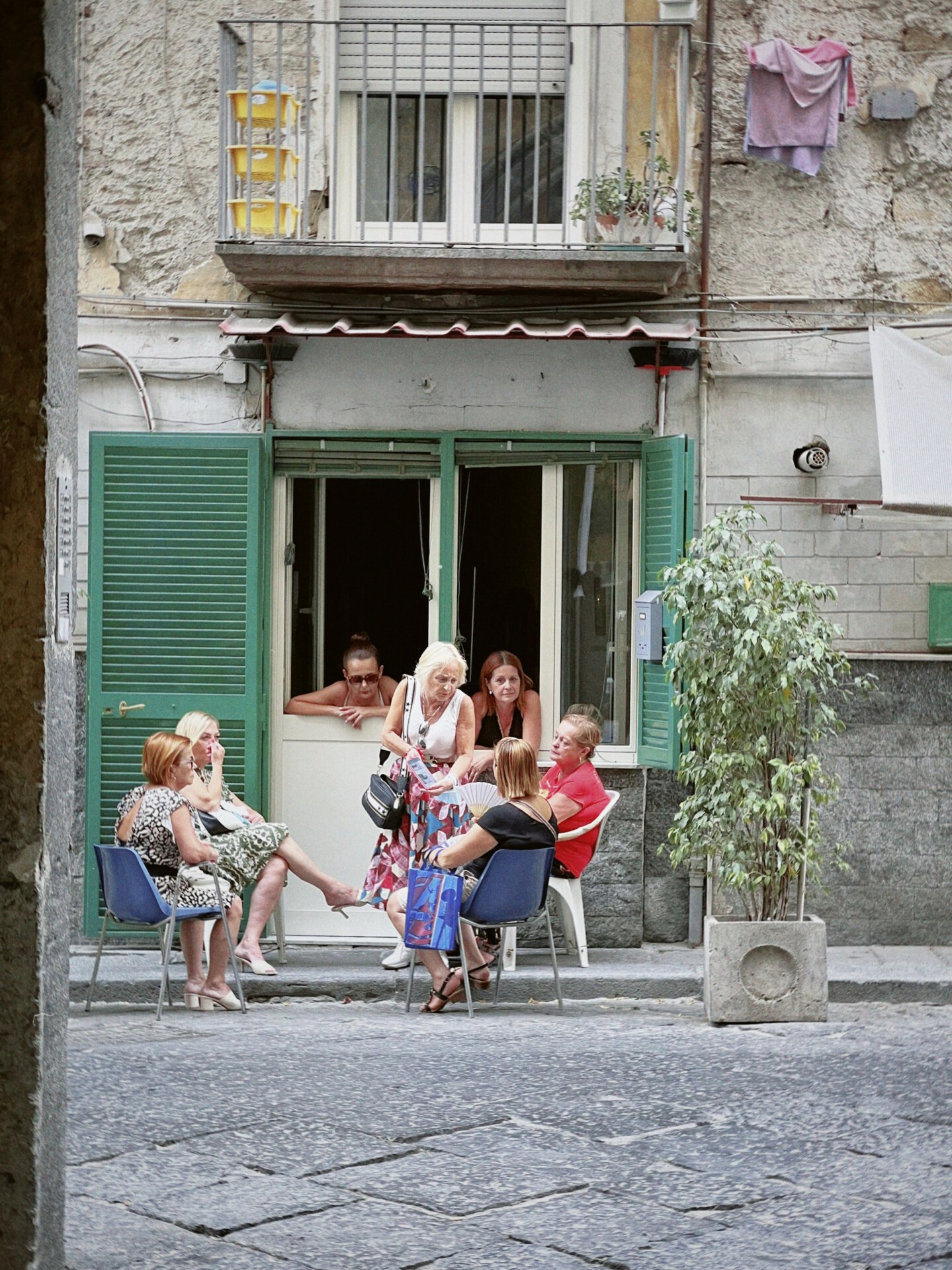
Right at number 138 Via dei Cristallini, one of the arteries of the district, sandwiched between colorful toy shops, butcher shops, hairdressers and the typical Neapolitan vasci (ground floor houses often with doors left open) is another such place. Step inside the courtyard and there’s calm, peace and Atelier Inès–a boutique hotel and workshop that has always been at the heart of the district. An oasis that’s happily embedded in the living fabric of the neighborhood, the courtyard’s lush garden is vaguely Andulusian and yet is literally surrounded by locals’ houses and balconies laden with laundry. You can hear the families that live there talking, singing, cooking, arguing.
Annibale Oste, a Neapolitan who had emigrated to America and returned home after making a bit of a fortune, bought the land–upon which there was an open-air theater from 1900 to 1930–and built a woodworking workshop; he soon became successful and known throughout the city for its craftsmanship. Later, in the 40s, he erected the building we see, creating a meeting place that would be central to the development of the entire district. Annibale’s grandson, also named Annibale, transformed the workshop into his own art and design studio in 1980, taking the family’s craftsmanship to a world-wide level with a range of renowned products including furniture, mirrors, paintings and jewelry. Annibale’s son Vincenzo Oste, now the owner of the space with his wife Inès, is the latest generation to continue the evolution. In 2017, the couple opened a six-room boutique hotel (and is planning on opening a new wing soon); each chic suite, styled by Inès, features art and furniture pieces made by this family’s generations of artists and artisans. Vincenzo manages the old workshop where he creates and realizes his own projects (his jewelry particularly stands out). Just one of many beautiful pieces you can see at the hotel is “Soffio di vento”–part of a triptych of sculptures that symbolizes the freedom of wind through a window. Vincenzo and Inès also organize workshops for artists and enthusiasts. (Make sure to check their website for the most up-to-date details.)
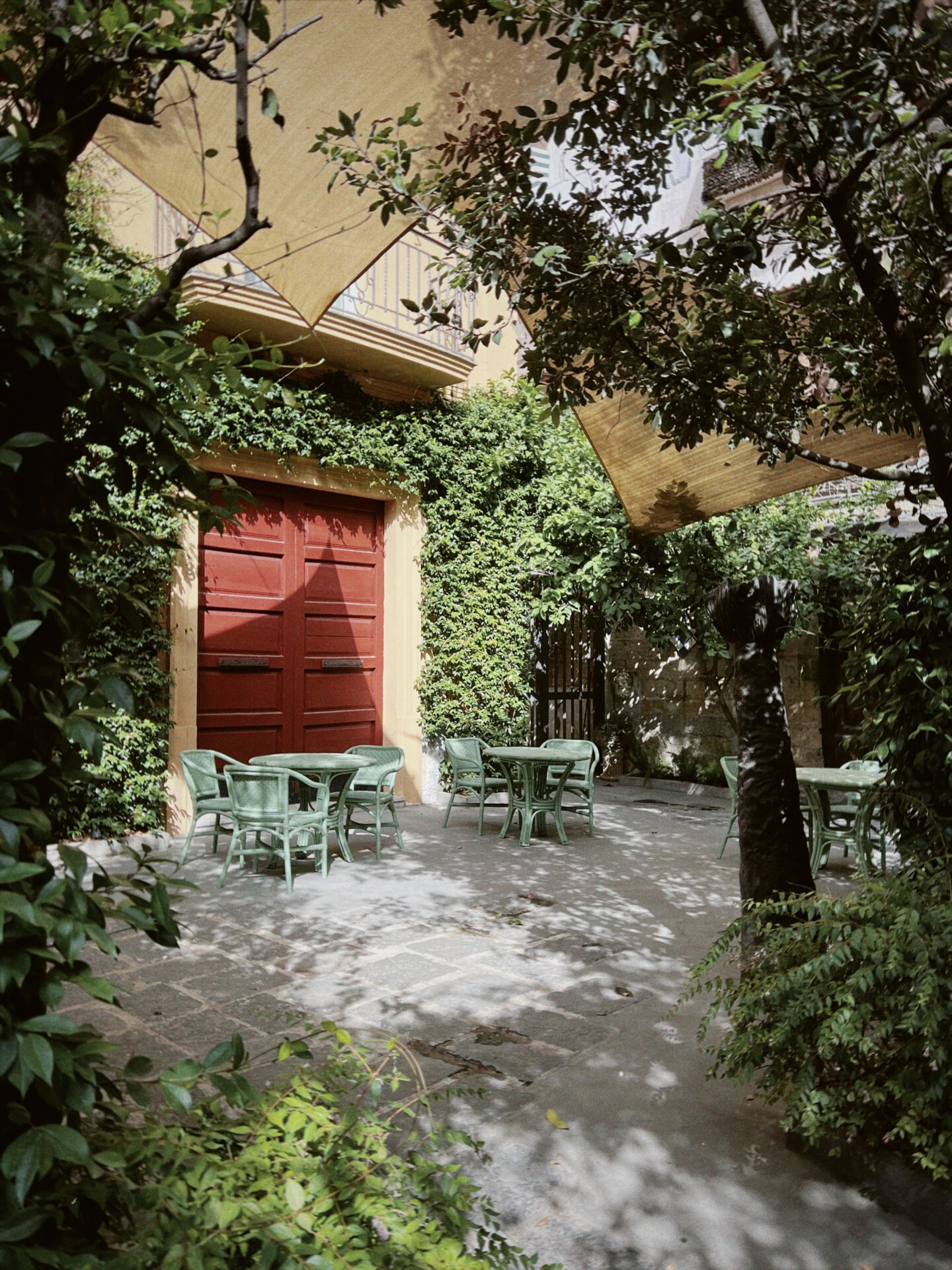
It’s Vincenzo himself who, together with his children Nour and Annibale, takes me through the atelier and the history of what this place represents for Sanità. It could be said, even as a provocation, that the district was a sort of Montparnasse of Naples: in the early 1900s, it was bohemian, dirty, popular and visceral. There were many craftsmen’s trades, most of which have completely disappeared today, and each business owner, together with the inhabitants of the neighborhood, networked with each other for survival. Like a family, they helped each other through poverty, disease and hunger, in spite of the attempt at “facade cleansing” made by the opening of the 1900 Universal Exhibition in the city. The mere presence of such a successful business as Annibale Oste’s (which gave employment to many local residents) made it a point of reference not only for the neighborhood, but for the entire city of Naples–so much so that well-known personalities today, such as aforementioned pizzaiolo Ciro Oliva, fondly remember Vincenzo’s parents, who sought to give luster and importance to the neighborhood. They clearly succeeded, because the atelier is still today a meeting place for Sanità–a locals’ spot for gathering, sharing and friendship.
Vincenzo confides in me that the atelier, in turn, would not be what it is without the support of the inhabitants of the neighborhood: it’s a sort of mutual emotional exchange that helps everyone. If Vincenzo needs a coffee, the caffeinated beverage arrives from the local cafe; if he needs a last-minute job from a goldsmith, the job is done in a flash by his neighbor and friend. No matter if Vincenzo has to welcome a journalist, a curious passerby or a guest, he treats everyone in the same way–as if they were part of the big Borgo dei Vergini family. You can feel how closely he and his family are linked to this place, and vice versa: one of the pillars of the neighborhood, Atelier Inès is a fundamental pivot point that recounts the richness and ingenuity of a part of Naples that has been able to renew itself and excel without denying its roots.
In an ideal conversation with a Rione Sanità local, you will not yet hear of gentrification: the neighborhood still remains firmly in the hands of people like Vincenzo and his wife, who try to elevate the name of a place without distorting its peculiarities. Perhaps this is the virtue of Sanità, whose people push to keep up with modernity without being tempted by homologation. The hope is that a neighborhood so rich and full of nuances, which has gone from being a place visitors were apprehensive about to the living center of the city and of tourist traffic, will remain true to itself–thanks to the people who were born there, who live there and who will continue to pour their intellect, craftsmanship and talent into their neighborhood.

